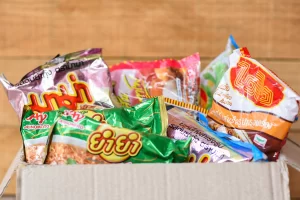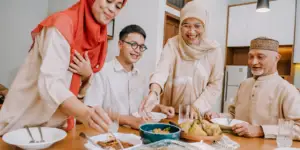Xanthan gum plays several crucial roles in baking, contributing to the texture, structure, and overall quality of baked goods. Here’s a detailed explanation of what xanthan gum does in baking:
- Thickening and Binding Agent: Xanthan gum is an excellent thickener and binder, allowing it to improve the texture and consistency of batters and doughs. It helps to bind the ingredients together, preventing separation and ensuring a smooth, uniform mixture. This is particularly important in gluten-free baking, where xanthan gum helps to provide the structure and elasticity typically provided by gluten.
- Moisture Retention: Xanthan gum has an exceptional ability to absorb and retain moisture, which helps to keep baked goods moist and fresh for longer periods. It prevents the rapid staling and drying out of breads, cakes, and other baked products, extending their shelf life.
- Stabilizing Agent: Xanthan gum acts as a stabilizer, helping to prevent separations and maintain the desired consistency in batters and doughs. It stabilizes the structure of baked goods, preventing them from collapsing or becoming dense and heavy during baking.
- Emulsifying Properties: Xanthan gum has emulsifying properties, which means it can help to bind together ingredients that typically don’t mix well, such as oils and water. This is particularly useful in recipes that contain both fat and liquid components, ensuring a smooth and well-incorporated batter or dough.
- Improved Freeze-Thaw Stability: Xanthan gum enhances the freeze-thaw stability of baked goods, making it easier to freeze and thaw products without compromising their texture or quality. This is beneficial for commercial bakeries and home bakers alike, as it allows for better preservation and extended shelf life.
- Gluten-Free Baking: In gluten-free baking, xanthan gum is an essential ingredient as it helps to mimic the properties of gluten, providing structure, elasticity, and moisture retention to gluten-free breads, cakes, and pastries.
- Reduced Stickiness: Xanthan gum can reduce the stickiness of batters and doughs, making them easier to work with and less likely to stick to surfaces or utensils during mixing and shaping.
While xanthan gum is widely used in baking, it’s important to note that only small quantities are typically required, often ranging from 0.25% to 1% of the total flour weight in a recipe. Overusing xanthan gum can lead to undesirable textures, such as a slimy or overly gummy consistency.
In summary, xanthan gum plays multiple roles in baking, including thickening, binding, moisture retention, stabilization, emulsification, freeze-thaw stability, and texture improvement, particularly in gluten-free baking. Its versatile properties make it an invaluable ingredient in the baking industry, helping to create high-quality, consistent, and long-lasting baked goods.





